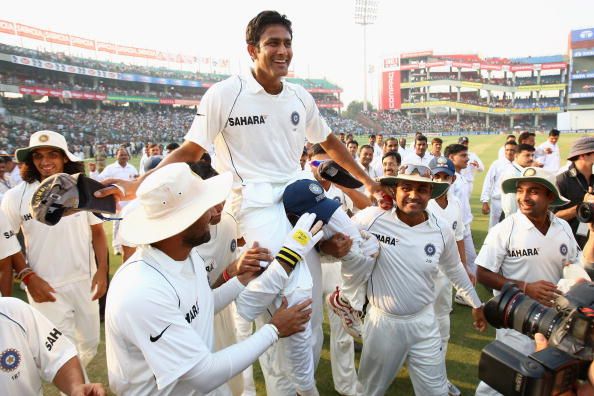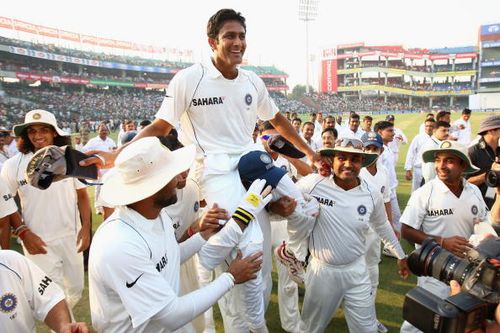
Anil Kumble: Inspiration, leader, legend

‘Subtlety’ is the word that best defines an exponent of the art of spin bowling. Beneath the innocuous action lies a crafty, cunning mind that only seeks to ensnare the batsman in its web of deceit.
A short bound, a tiny jump in the air, a flick of the finger (or, in some cases, a lithe movement of the wrist) and the ball, hitherto a friendly object, lands on the deck and spins viciously, bamboozling the willow wielder into a false stroke. By the time he realizes it, he’s already walking back to the pavilion.
The art of leg spin in India was in danger of dying out upon the exit of the great BS Chandrasekhar and the wily Laxman Sivaramakrishnan. Stocks in this department were running low, until the arrival of a six-foot Bangalorean lad changed the landscape – forever.
Anil Kumble, the fulcrum of the Indian spin attack for much of the nineties, and one of the nicest people to have represented the game for nearly two decades, put his hand up when the call went out for a leg-spinner to ply his trade for the national side.
Nothing about his appearance was remarkable in those days – he had the look of a typical nerd, with round-rimmed spectacles perched squarely on his nose. He didn’t even start off as a spinner in the first place; he would bowl medium pace and was a handy batsman too.
Like most youngsters of his age, he had his own cricketing idols in Chandrasekhar and the Australian leg-break bowler Bill O’Reilly. He tried to model his action on them, and on the matting wickets that Bangalore had to offer, he developed a unique method of sending the ball down at the other end. And because those pitches favoured top-spin as well as over-spin, Kumble became a master of both.
A mechanical engineer by degree, the bespectacled Anil finished his exams while on tour to England in 1990. When Kapil Dev was bowling at Old Trafford, the newbie spinner, on the field as a substitute, let the ball through his legs in a classic display of poor fielding. It was enough to rankle the veteran seamer, who promptly fired a verbal volley at the youngster, causing him to break down in the dressing room later.
However, the experience taught Kumble one thing – the importance of being focused on the game. He re-dedicated himself to becoming one of the key bowlers in the side, working hard on his craft, and bringing in a lot more variety in his bowling armour.
His hard work paid off handsomely. In the South African safari of 1992, he established himself as a champion tweaker. But it was the Hero Cup final of 1993 that made the world sit up and take notice as Anil took out six Windies batsmen on a wearing Kolkata pitch. His figures of 6/12 still remain the best by an Indian bowler in ODI cricket.
Anil also spent a season playing county cricket for Northamptonshire in 1995, becoming the only bowler to pick up over a hundred wickets at the time. The onus was to prepare for the English tour later that year; he wanted to get used to the conditions on offer. His performances on the county circuit, though, prompted the Bible of Cricket – Wisden – to anoint him as one of their five Cricketers of the Year in 1996.
For all his performances, though, the moustached bowler was unable to steer his side to victory in the World Cup in 1996. Despite playing on one of his favourite surfaces – Eden Gardens – Kumble was taken for runs by Sri Lanka’s Aravinda de Silva, and repeated crowd disturbance in India’s innings forced the officials to award the game to the Emerald Isle nation.
Three years later, Anil would replicate England off-spinner Jim Laker’s feat of getting a perfect 10 in a single Test innings. Humble and modest to the core, he remarked in an interview that these things happened once in a lifetime – a statement that drew much praise from all quarters.